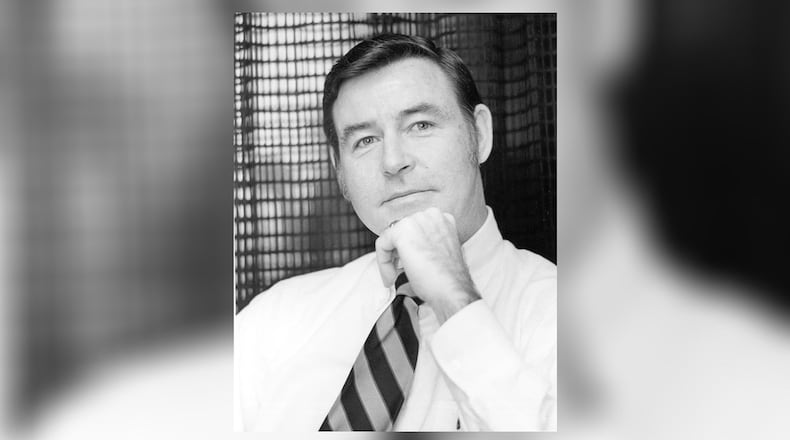Walter Carry wanted the architectural firm he co-founded – like the structures he designed – to endure beyond his life.
That meant bucking the trend of architectural firms of the 1960s and 1970s that lived and died with one generation.
Carry and the leaders at Atlanta-based Cooper Carry decided the solution was to hire young architects and promote them to partners.
“They wanted a larger firm and one that would carry on for many, many more generations. And, they basically gave the firm over to the next generation so that could happen,” said Pope Bullock, a partner and 37-year member of the firm.
Walter Thomas Carry, co-founder of the well-known and award-winning Atlanta architectural firm and a mentor to many architects, died Dec. 7 in Atlanta. He was 88.
No services are planned.
Carry designed office towers, resorts and historic redevelopments and put a unique architectural mark on them in his 30-plus years at the helm of Cooper Carry.
“He helped establish the core philosophy that the spaces between the buildings are as important as the buildings themselves,” said Bullock. “So, we designed total environments when most architects were just putting buildings on site and wrapping them with parking lots.”
Firm co-founder Jerry Cooper said: “We had a dream to create a firm that would connect ideas and people to the places where they live, work and learn. Cooper Carry is the culmination of that dream, which would never have been realized without Walter’s unconquerable drive.”
The firm grew to integrate everything from interior design to landscape architecture, from graphics that tell a building’s story to restaurant design.
Along with the drive, Carry showed intellect, passion and occasional flashes of Irish temper, his friends said.
His signature projects included the redevelopment of Underground Atlanta, Marriott’s Bay Point Resort & Villas in Panama City, Southern States corporate headquarters in Richmond, Va., as well as Atlanta’s Piedmont Center office campus, AT&T Data Complex, and Kimberly Clark Science & Technology Center. The 200-plus projects he designed or supervised included three fire stations in DeKalb County.
Kevin Cantley, the firm’s CEO, said Carry “helped usher in a new era of architecture in Atlanta, the Southeast and beyond.”
Not only did Carry contribute designs that have stood the test of time, but he helped establish a sense of respect for architecture as a profession, Cooper said. Carry was involved in many professional organizations on state and national levels.
“Walter’s influence on our profession cannot be overstated, and his legacy lives on as Cooper Carry continues to build on the foundation that he and Jerry [Cooper] started six decades ago,” Cantley said.
Some of Carry’s insights just came from his “raw intelligence.” But his work with the state and national architectural groups also gave him an opportunity to “look ahead to where the profession was going,” including with mixed-used developments.
Carry was a key player in a decision in the 1980s to transform Cooper Carry from a generalist firm, doing mostly office, hotel and retail projects in the Southeast, to one with specialty groups that works in the U.S. and abroad.
Cooper called his former partner, who retired in 1996, “one of the true giants in our field.”
The firm the two men started in 1960 has designed projects in 45 states and in Asia, Central America, the Caribbean and Middle East.
It was named as 2018 Firm of the Year by AIA Georgia.
Carry served as president of the National Council of Architectural Registration in 1988. He also was a past president of the Atlanta chapter of American Institute of Architects (AIA) and of the Georgia State Board of Architects.
His professional success brought him numerous accolades, including the AIA’s coveted Presidential Citation (1989), the AIA Leadership Award (1978) and the Blue Key Leadership Award from his alma mater, the University of Florida.
About the Author
The Latest
Featured


